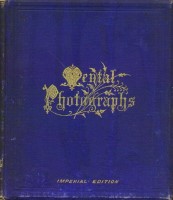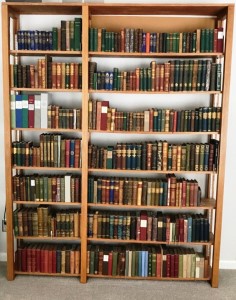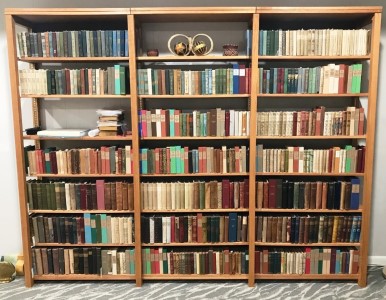Site Map
Home (Index, Flash) Page – an introduction to the Project with links to additional, key, explanatory pages. The banner contains links to the following sub-index pages (bold) with links to key pages in turn linked to them:
FAQ – frequently asked questions, generally about similar books and their market value, with answers and research suggestions.
Lucile’s Publishers – a list of American and English publishers known or reported to have published one or more editions of Lucile. There are about 100 publishers. Each list entry is linked to one or more pages about that publisher and the editions of Lucile it issued.
Texts -- This tab hosts a collection of pages presenting side-by-side versions of the two rather different texts of the book: that published in 1860 (and kept in print into at least the 1880s) and the substantially revised text issued in 1867 (and kept in print until the 1930s). I have as yet found no comment or criticism acknowledging or comparing the two versions -- and most readers would not have been able to easily identify which version they had in hand. It appears that the 1867 edition may have been small, largely unavailable in the United States, and received very little, if any, notice. However, the first illustrated edition, 1868, published in both England and the United States, followed the 1867 revised text; consequently, many American publishers who chose to recycle the Du Maurier illustrations, embedded in the 1868 text, thereby issued, knowingly or not, the text as revised in 1867.
Meredith’s dedication to his father (1860) and his preface (1867) responding to charges of plagiarism;
Comparison of a few passages Meredith changed dramatically for the 1867 third English edition -- most post-1867 American reprint editions, excepting those stereotyped by Ticknor & Fields before 1868, seem to follow the text of the 1867 edition (but this requires confirmation).
Illustrations -- This tab gathers information about the numerous illustrators of Lucile and places their work in chronological order by date of appearance.
Reviews, Sightings, & Oddities – an index page that links to sub-pages for:
A paper on the Project I read at the 39th Rare Books and Manuscripts Preconference, Getting Ready for the Nineteenth Century: Strategies and Solutions for Rare Book and Special Collections Librarians (Washington, June 23-26,1998): "The Case of Lucile.". It describes two surveys of American libraries collecting information on Lucile holdings.
A survey of Meredith's work written by his daughter, Betty Balfour, as an introduction for the 1893 Longmans, Green & Co. two-volume edition of a selection of his poetry.
Reviews of Lucile on publication in 1860 and later (in the New York Times, as well as other newspapers and magazines).
Mentions of Lucile (or particular passages of the poem) in critical and scholarly articles and books or in other literary works;
Oddities related to Lucile include:
Alphonso Hopkins's Geraldine (1881), which the author claimed to have written with no knowledge of Lucile. Very oddly, James R. Osgood was this book's first publisher, it passed to Ticknor & Company, and then to Houghton, Mifflin, thus enjoying quite a long life. Catherine Ann Addison's "The Victorian Verse Novel as Bestseller: Owen Meredith's Lucile". Victorican Literature and Culture (2017) 45:257-274, argues that Lytton's work has merit not recognized by critics contemporaneously with publication or later and that his fluency in both English and French gives his poetry more subtlety than has previously been recognized. She discusses Geraldine briefly. Andrew M. Stauffer discusses a copy of this edition in his Book Traces: Nineteenth-Century Readers and the Future of the Library, University of Pennsylvania Press, 2021, p5-6, which was annotated by a group of at least four early reader who react not only to the text but to each other's reactions.
An American translation of George Sand's 1834 novelette Lavinia (on which Canto I of Lucile is ever so closely based) titled Lady Blake's Love Letters (1884).
Five dramatizations from the early 1900s. No evidence has been found that any of them were actually staged.
In 1912, Lucile was released in a three-part photoplay (3 reels) by the Thanhouser Company: Directed by Lucius J. Henderson from a scenario by Lloyd F. Longergan, the cast included Lucile played by Marguerite Snow, Vargrave by James Cruze, Matilda by Florence LaBadie, and William Russell as the Duc de Luvois. Regretably, it appears that no copy of the film has survived. Some sense of it is given by a synopsis in The Moving Picture World and selected reviews.
Mental Photographs

In 1869 Frederick Leypoldt, soon to be publisher of Publishers’ Weekly, with his partner, Henry Holt, copyrighted an idea encapsulated in book format titled Mental Photographs, an Album for Confessions of Tastes, Habits, and Convictions, edited by Robert Saxton. It proved popular and continued in print with multiple editions, multiple imprints, and multiple bindings through the remainder of the century. By 1870 it could be had in two formats, as described by the publisher:
"I. The copies in cloth containing seventy-six blanks of Twenty-three questions each, called, on account of the comparative brevity of the Mental Photographs, the "Carte-de-Visite" edition. This edition will be generally preferred by those to whom the Album is a comparative novelty.
"II. The copies in cloth containing thirty-eight blanks of Forty questions each, called because each "Mental Photograph" is of fuller dimensions than those of the other edition, the “Imperial edition.” This edition will be preferred by those already fond of the amusement."
The books were used in a variety of ways as suggested in the “Preface” which leads to two completed Photographs which mention Meredith and Lucile. (Scroll down past title page, preface, etc.).
The first is by Miss S. [Francine[?} Speck, entered on October 16, 1895, whose Favorite Poets (#14) are "Longfellow & Owen Meredith," Poetess (#15) "Mrs. Browning," Favorite Character in Romance (#16) is Lucile," and Motto (#40) is "Grin and bear it."
The second is difficult to decipher but we take the name as "Louise Morrison" and the date [Jan. 13], 1891. Her Favorite Hour in the day (#5) is "The Gloaming," Season is (#6) "Winter," Painter (#11) "Murillo," Poetess (#15) "Mrs. Browning," Character in Romance (#17 "Lucile, Ben Hur," Character in History (#16), "Marie Antoinette," Book to take up for an Hour (#19), "In Ole Virginia [or Marse Chan and other stories," Thomas Nelson Page (Charles Scribner’s Sons, 1887)]. The Project would love to have other answers readers are able to identify!
For "Photographs" of several more famous writers (many women) see Laura Stedman, "Confessions of an Album" from The Bookman (Dodd, Mead & Co. XXXVII:2 (April 1913, pages 126-132) Part I and XXXVII:3 (May 1913, pages 164-169) Part II. (NOTE: these links take you to HathiTrust.)
Research Tools – full, annotated, bibliographic citations for articles and books mentioned in the headnotes of the publishers’ pages. The resources cited form a solid working bibliography on key aspects of printing, publishing, and distributing gift books and books in series between 1850 and 1915, particularly the work of publishers that actively published works that could not be copyrighted in the United States before July 1, 1891.
PTLA (Publishers’ Trade List Annual) – an annual collection of publishers’ catalogs first issued in 1873, it continued to be published past 2000 (and was then merged into a data base, Bowker's World Books in Print). This link leads to an essay on the publication and an index I have made of the catalogs and advertisements contributed to each volume during the first 75 years (1873-1947). Since it is now difficult to access a full set of the volumes, it is highly useful to be able to determine, in advance of seeking volumes, the specific years a publisher actually submitted a catalog. Many publishers submitted catalogs erratically. Indexes to PTLA 1873-1947.
Also placed here is a similar index of publishers, including some Americans, contibuting catalogs to the Reference Catalogue of Current Literature, 1874-1932, a periodical modeled explictly on PTLA. Since Lucile remained in copyright in Britain, no American reprint editions were explorted there by American publishers.
Some PTLA volumes are available digitally at HathiTrust; I maintain an inventory of reported paper and electonic holdings.
Collection and Site Statistics 1/23/2020

Living Room North shelves: Ticknor & Fields and successor firms through Houghton, Mifflin & Co. plus publishers Adams-Victor to Samuel Cassino. Occupies 44 shelf feet (of 45.5 available).

Living Room East shelves: Chapman & Hall through E. & J.B. Young (with exceptions listed in Family Room). Crowell occupies 4.5' of the top shelf + 7 feet of the second (this 12mo sequence continues in the Family Room, together with all Crowell 16mos.). This unit has 70 linear feet, all but two feet occupied.

Family Room: All Altemus, Caldwell, Conkey, Crowell, & Hurst 16mos, plus the end of Crowell 12mos and all Hurst 12mos as well as 16mos. The 12mo Crowell and 12mo Hurst here occupy 17 feet; in total, 56 of 62.5 feet in this shelving unit are occupied.
Living Room (44 + 68' = 112 feet) plus Family Room (56 feet) = 168 linear feet occupied by the collection in total at this date.
1411 copies of Lucile are held in the collection, plus an additional 124 editions of Meredith's Works (including Lucile) for a total of 1535 volumes. There are very few “duplicates,” strictly speaking, after differences between bindings, endsheets, frontispieces, and illustrations, are taken into consideration.
1058 copies are bound in cloth (most decorated or embellished cloth); 44 are bound in quarter or half leather; and 263 are bound in full leather, about 150 of these in padded, generally embossed, leather and about 60 in ooze leather (both limp and padded).
The site includes 2420 “small” images, most backed by a PopBox enlargement that opens at a click on the small image, for a total of nearly 5000 images. Note that the captions on "large" images describe the volume being imaged and not a volume with generic characteristics: those characteristics are recorded thoughout the site by direct quotation from PTLA catalogs. This quoted material abundantly documents the expectations publishers assumed would motivate buyers; descriptive terminology used in the printing and binding trades; and a great many other facets of book publishing in the 1850-1920 period.
Last revised: 16 August 2023